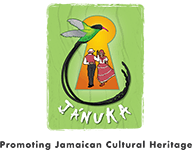1. Our African ancestors’ dress code:
 Africans love to “dress up”. Emphasis on appropriate dress is apparently central to all social, economic, spiritual and cultural functioning in African societies.
Africans love to “dress up”. Emphasis on appropriate dress is apparently central to all social, economic, spiritual and cultural functioning in African societies.
Ritual dressing for special occasions required covering the body in visually attractive clothing. The wearing of animal skin and leather; face and body scarring and painting; ceremonial masks; elaborate and artistically designed hairstyles and/or head coverings; profusion of appropriately matching beads, handbag and shoes; gold and silver jewellery are significant.
They are worn to communicate place of origin, tribal and cultural affiliation, age, sex, wealth, family, organization, occupation and position held within communities.
2. The vibrancy and significance of colours worn
Anecdotal evidence also suggests that the vibrant colours, in the intricately manufactured fabrics used for making African clothing could be culturally symbolic of life stages, specific life events, spiritual and religious beliefs, as well as social and emotional well-being. For example:
| Red | Associated with war, blood, resistance, courage, strength and victory. In African religious circles it is associated with spiritual awakening, Pentecost and protection against evil spirits. |
| White | Associated with innocence, birth, virginity, purity and light, spiritual tranquility, marriage and thanksgiving. |
| Green | Associated with healing, success, marriage, breaking of shackles and freedom from bondage, fertility, hope, victory of life over death, bountifulness, and prosperity. |
| Yellow | Associated with the highest intellect, fiery passion, youthful happiness and harvest. |
| Gold | Associated with the Holy Spirit, the God Head, kingliness, glory, purification, divinity, righteousness, divine light, mercy, source of power, majesty, deity and wealth. |
| Black | Associated with, death, funerals, eternity, fear, destruction, to kill or hurt and the Liturgical colour of Good Friday. |
| Blue | Associated with motherhood, Mother Mary, skies, heaven, life giving air, hope, good health, truth, peace, and tranquility. |
| Purple | Associated with order of sanctification, new membership, fasting, faith, patience, trust, penitence, mourning, and royalty. |
3. Our Ancestors Knowledge and Skills in Manufacturing and trading clothing and cloth
According to Buckridge (2004), “It was in Africa that some of the great advancements were made in the history of dress and the manufacture of cloth”. Africans therefore have knowledge and experience in the manufacturing and trading of cloth and clothing.
They were aware of changes in fashion and design technology through their major trade links, and utilized this knowledge to create new fashionable designs. Cotton and lace fabrics were commonly manufactured and used in the design of clothing.
Knowledge, skills and experience in textile dyeing, weaving, sewing, embroidering, hand-sewn beadwork, tailoring, shoemaking were also common among West Africans.
4. The Accessories They Wore
 Beads
Beads
Beads were popular accessories, made from animal teeth or vertebrae, shells, nuts, ivory, stones, copper, brass, silver, gold and glass.
The amount, type and where worn on the body, help to communicate the wearer’s age, sex, wealth and status. Beads were also worn for protection from evil spirits.
Headdress
Elaborate and individually designed headdresses were worn on special occasions. They are made from fabric that matches the dress, varying in size and complexity.
Shaven heads, wigs, hair extensions, braids, twist, parted and wrapped with heavy black cotton, plaits, coils, curls, corn rows, locks, are also commonly seen to reflect age, wealth, social standing and artistic expression.
 Head scarves
Head scarves
Head scarves/wrap were popularly worn by West African women, either casually and for special occasions. The colour dyed fabric and style of head wrap reflected the individual woman’s creativity and ingenuity.
5. The amount of clothing they wore
The undressed or partially dressed body, including bare-footed and bare-headed, were socially and culturally acceptable in some African cultures. This way of dressing was perceived as appropriate for fieldwork in the hot climate.
Although stylistic interpretation and the amount of cloth used to cover the body differed between and among cultural groups, on the whole, Africans knew how to adorn their bodies, to look and feel good, communicate their sense of purpose and their strong relationship with nature and their environment.
They took their individualistic and collective interpretation of dress to Jamaica.




